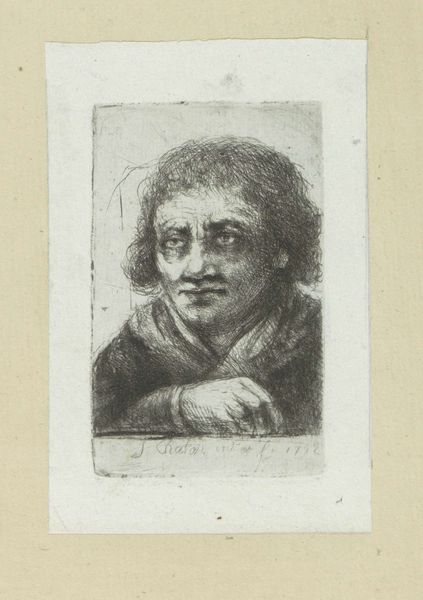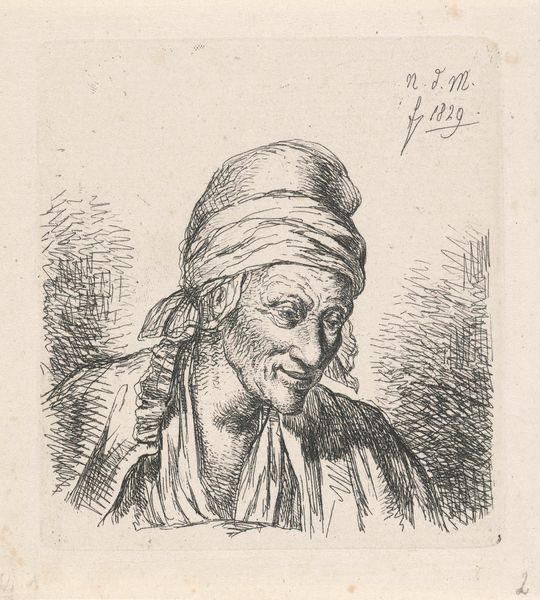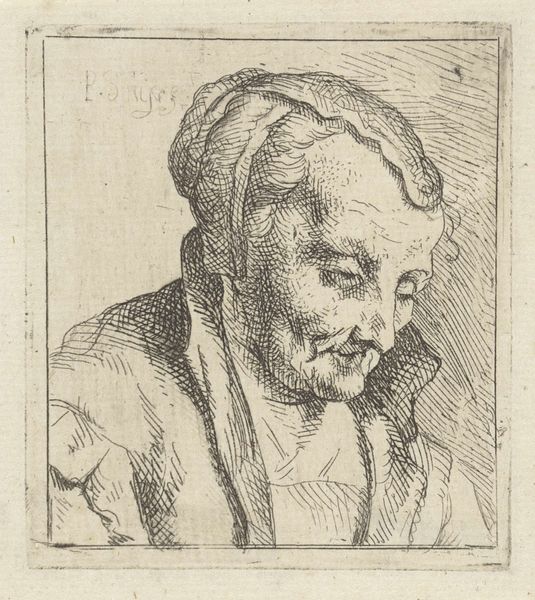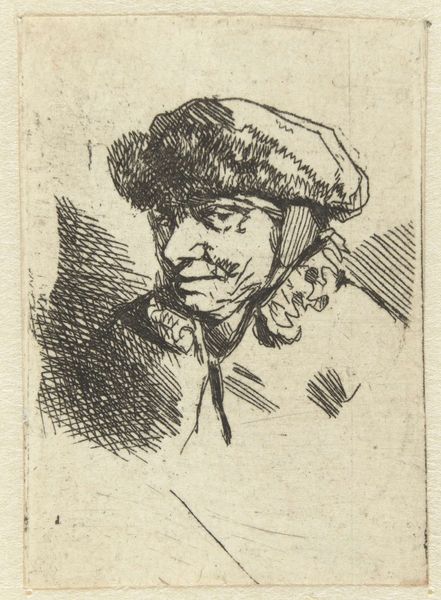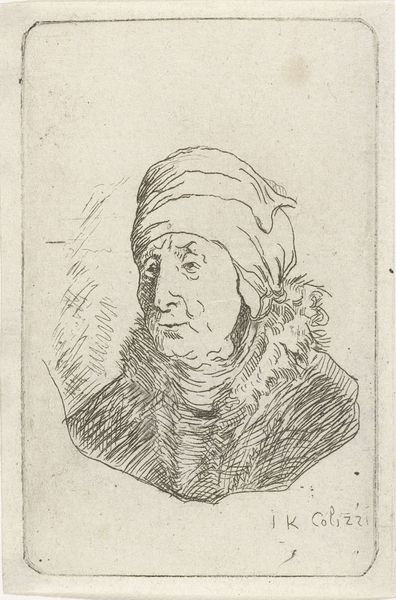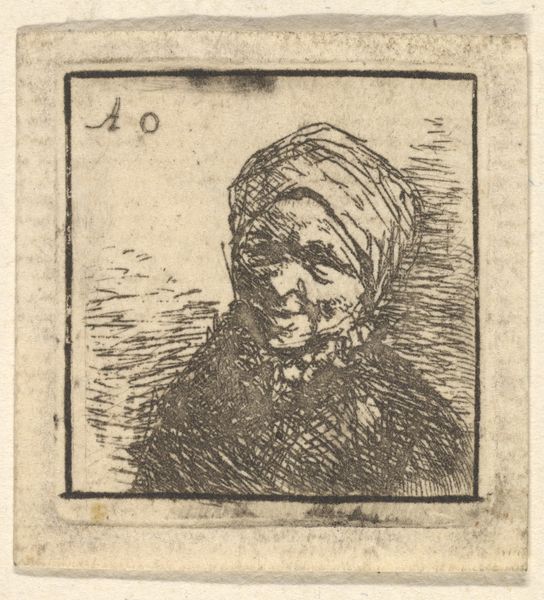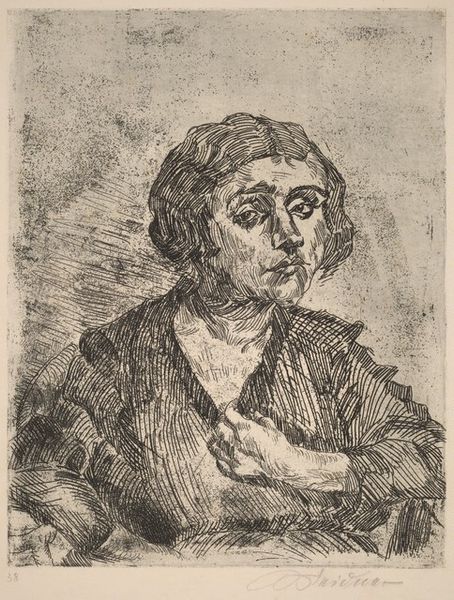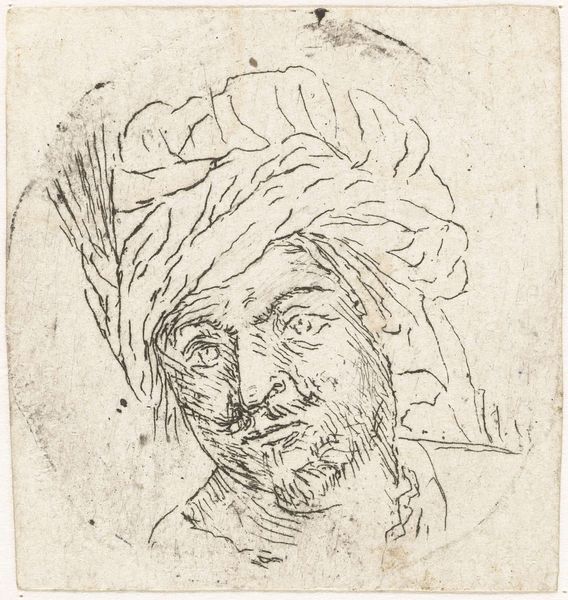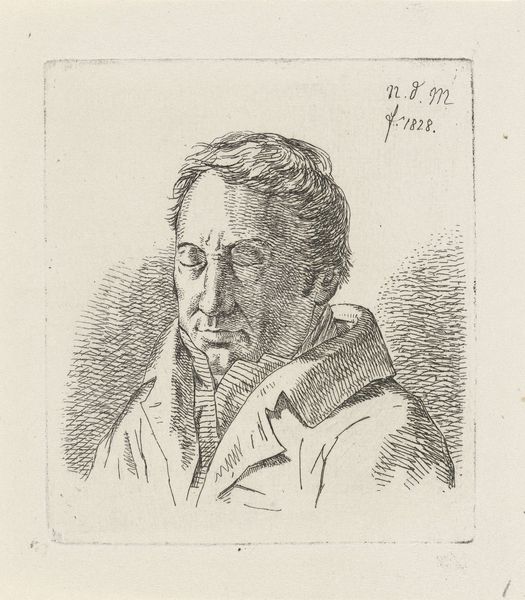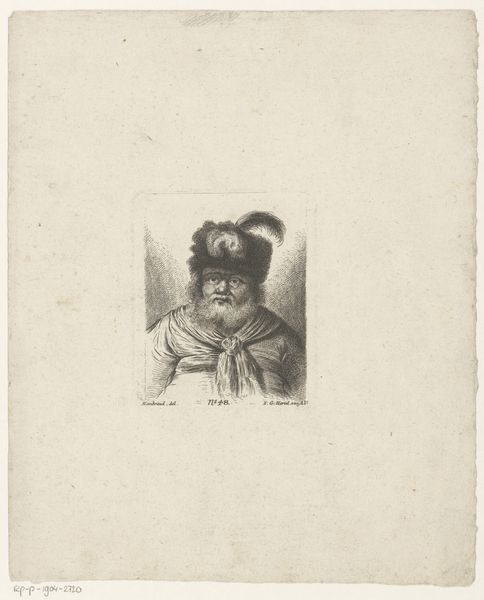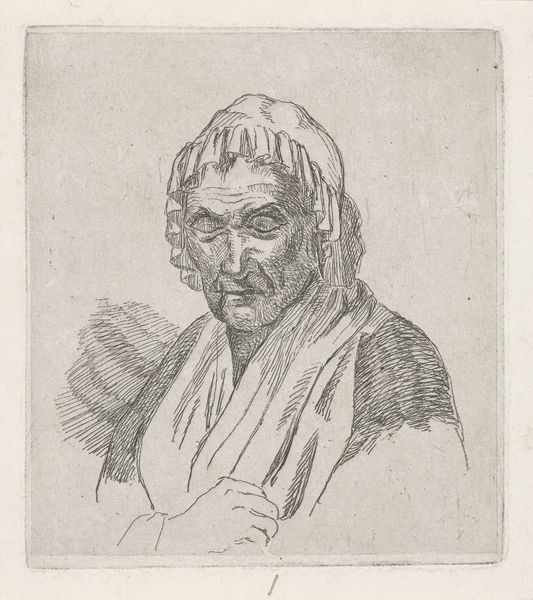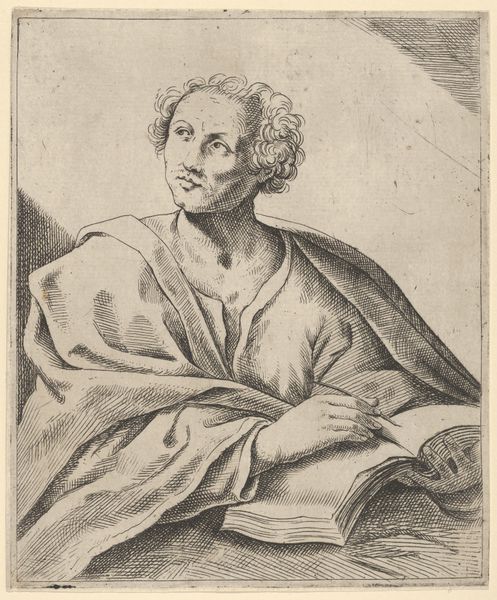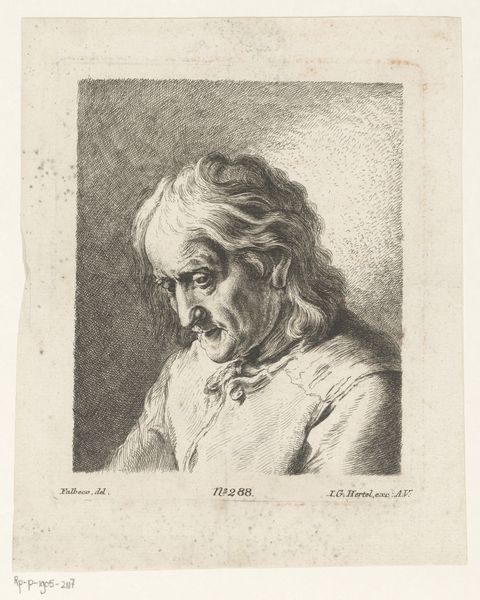
Brystbillede af en kvinde, vendt mod højre, hovedet drejet mod højre skulder 1631 - 1664
0:00
0:00
print, etching
#
portrait
#
baroque
#
dutch-golden-age
# print
#
etching
#
figuration
#
portrait drawing
Dimensions: 44 mm (height) x 32 mm (width) (plademaal)
Editor: Here we have Cornelis Pietersz Bega's "Brystbillede af en kvinde, vendt mod højre, hovedet drejet mod højre skulder," an etching dating sometime between 1631 and 1664. The immediacy of the woman's expression really strikes me. What do you see in this piece? Curator: It’s fascinating to consider this work through the lens of 17th-century Dutch society. Etchings like these, affordable and reproducible, circulated widely, contributing to the era's burgeoning visual culture. How do you think this image might have functioned in its original context, beyond being simply a portrait? Editor: I guess it could have been… something about the gaze and slightly open mouth suggest she might be about to say something or caught in conversation. Could it reflect shifting roles for women at that time, or is that reading too much into it? Curator: That's a critical point to consider. The Golden Age saw increased participation of women in certain sectors, particularly in commerce and art. Could this be a subtle assertion of a woman's voice, literally and figuratively, in a society still largely dominated by men? Also consider that Bega primarily depicted peasant life, sometimes even lampooning it; what impact does this have on our understanding of the work? Editor: Oh, interesting, the class dimension is significant then… so rather than an empowering representation, could it perpetuate stereotypes or class distinctions? Curator: Precisely. It’s this tension between representation and societal critique that makes these images so compelling. Understanding Bega’s work necessitates delving into the complexities of Dutch society, exploring how images both reflected and shaped perceptions of gender and class. Editor: This conversation has changed how I view this portrait, realizing how it can be viewed within the historical power structures and gender relations of its time. Thank you! Curator: And for me, thinking about your perspective is a good reminder that a piece’s activist message depends on context.
Comments
No comments
Be the first to comment and join the conversation on the ultimate creative platform.
